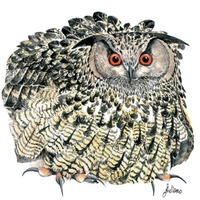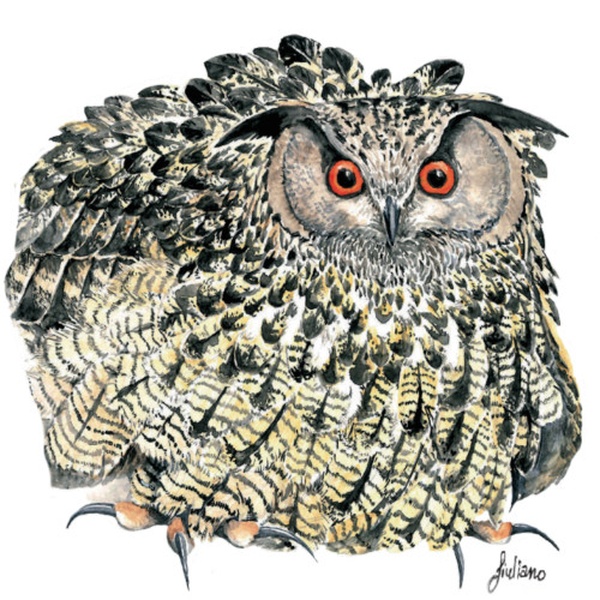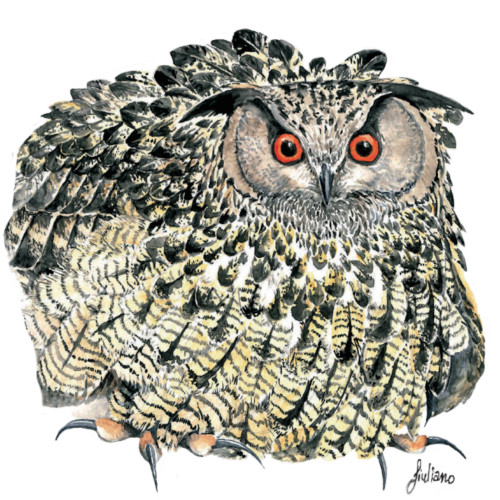

Classification:
Common name: Eurasian eagle-owl
Kingdom: Animalia
Phylum: Chordata
Subphylum: Vertebrata
Class: Aves
Order: Strigiformes
Family: Strigidae
Genus: Bubo
Scientific name: Bubo bubo
Habitat:
In recent decades, knowledge regarding the actual distribution and population of the species in Piedmont has significantly improved. Currently, in the Protected Areas of the Cozie Alps, there are just under 40 occupied territories, including 4 in the Chisone Valley, 1 in the Sangone Valley, and 12 in the Susa Valley; this valley is particularly suitable for the eagle owl due to its geographical formation and climatic characteristics.
Where can you find me?
Where can you find me?
Parco naturale Gran Bosco di Salbertrand
Parco naturale Orsiera Rocciavrè
Parco naturale Val Troncea
ZSC Bardonecchia Val Fredda
ZSC Cima Fournier e Lago Nero
ZSC Gran Bosco di Salbertrand
ZSC Les Arnauds Punta Quattro Sorelle
ZSC – ZPS Orsiera Rocciavrè
ZSC – ZPS Val Troncea
Classification:
Common name: Eurasian eagle-owl
Kingdom: Animalia
Phylum: Chordata
Subphylum: Vertebrata
Class: Aves
Order: Strigiformes
Family: Strigidae
Genus: Bubo
Scientific name: Bubo bubo
Habitat:
In recent decades, knowledge regarding the actual distribution and population of the species in Piedmont has significantly improved. Currently, in the Protected Areas of the Cozie Alps, there are just under 40 occupied territories, including 4 in the Chisone Valley, 1 in the Sangone Valley, and 12 in the Susa Valley; this valley is particularly suitable for the eagle owl due to its geographical formation and climatic characteristics.
The Eurasian Eagle-Owl is the largest nocturnal bird of prey in Europe and one of the most majestic birds in our mountains. Its wingspan can reach and exceed 180 centimeters, while its weight varies on average between 2 and 3.5 kilograms, with females being bulkier than males. It is unmistakable for its large bright orange eyes and the tufts of feathers on its head that resemble ears, which it raises especially when alert. Its species shows no sexual dimorphism except for the slightly larger size of females.
The mottled brown plumage offers it perfect camouflage among rocks, logs, and vegetation, making it almost invisible during the day when it remains hidden and motionless. At night, however, it transforms into a silent and agile predator: the flight feathers have a special structure that dampens the noise of flight, allowing it to approach prey without being perceived.
It is not surprising that its figure has fueled legends and symbols throughout Europe. Due to its deep and mysterious call, audible kilometers away, it has been associated over time with both wisdom and the magical and dark world. Today, it remains one of the most fascinating and charismatic animals of alpine fauna.
Where it lives
The Eurasian Eagle-Owl has a vast distribution covering much of Eurasia. In Italy, it is primarily found in the Alps and the Apennines, albeit in a sporadic manner. In the Western Alps, it prefers rocky cliffs, valleys, and mature forests, often with open areas nearby that facilitate its hunting.
This species can also colonize hilly and flat environments, provided they are not heavily disturbed by human activity. However, it remains very sensitive to disturbances: excessive use of cliffs and climbing sites, for example, can compromise reproduction. Its presence is therefore often a good indicator of the naturalness and tranquility of an area.
What it eats
The Eurasian Eagle-Owl is a versatile and opportunistic predator, able to adapt its diet to the availability of prey. It mainly feeds on small to medium-sized mammals such as wild rabbits, hares, and rodents, but can kill larger animals like chamois and fox cubs and regularly catches birds – from partridges to crows to medium-sized diurnal raptors. Occasionally, it also consumes reptiles, amphibians, fish, and large insects.
Thanks to the strength of its legs and talons, it can grasp prey of considerable size. Hunting takes place almost always at night, with a silent flight that allows it to surprise animals without alarming them. In environments where prey are abundant, it can help maintain ecological balance by regulating populations of small mammals.
Like most birds of prey, it tends to swallow its prey whole, including undigestible components such as bones, feathers, or fur, which it regurgitates every 3-4 days in the form of elongated pellets with a diameter of 3-4 cm. Their study represents an important source of information for researchers, who through their analysis can accurately reconstruct the species' diet and monitor its feeding habits in different environments.
Reproduction
The breeding season begins much earlier than other birds of prey: already by late winter, the pair establishes the nesting site. The Eurasian Eagle-Owl does not build a proper nest but lays its eggs (from two to four) directly on the ground, on a rocky ledge, or in a natural cavity. The female is entirely responsible for incubation, which lasts about 35 days, while the male hunts and brings her food.
The young, covered with a thick light down, leave the nest after five or six weeks, but they are not yet capable of flying well: for this reason, they are called "branchers," as they move on foot in the vicinity of the birth site. The parents follow and feed them devotedly until autumn when they become independent.
Sexual maturity is reached at around two to three years of age, although not all young ones can immediately secure a territory and a mate. Pair formation occurs through complex courtship rituals, which include acrobatic flights, food offerings, and vocal duets. Once established, the bond remains stable: Eurasian Eagle-Owls are generally monogamous, and pairs remain faithful both to their partner and to their nesting territory for life, defending it with powerful calls and determined territorial behaviors.
The call of the Eurasian Eagle-Owl
The call of the Eurasian Eagle-Owl is one of the most characteristic and evocative sounds of alpine fauna. The male emits a deep, low, and resonant "hoo," which can be heard up to 4 kilometers away on quiet, clear nights. This song, repeated at regular intervals, serves multiple functions: it attracts the mate, maintains the pair bond, and especially signals presence in the territory, keeping potential rivals at bay. The female also responds with similar calls, but with a higher and less powerful tone.
The period in which it is heard most frequently runs from winter to early spring, when the breeding season approaches and the males defend their domains more energetically. Due to the elusive nature of the owl and its ability to blend into its environment, listening for calls remains the only tool to verify its presence and for monitoring.
Conservation and threats
In the past, the Eurasian Eagle-Owl was persecuted because it was considered harmful to game or livestock species. Poisonings and shootings have led to a significant decline in many regions. Since the 1970s, with the introduction of protection laws and conservation projects, the situation has improved, and today the species shows a slow recovery.
However, several threats remain: human disturbance at nesting sites, collisions with high-voltage power lines, the use of rodenticides that indirectly poison its prey, and the decline of certain species it feeds on. The global IUCN classification is "Least Concern," but local conservation still requires attention, especially in alpine environments frequented by hikers and climbers.
You might also be interested in...
- emoji_nature Rock sparrow
- emoji_nature White partridge.
- emoji_nature Bearded vulture
- emoji_nature Mountain pheasant
- shopping_cart Calendar 2002
- tactic Progetto internazionale di reintroduzione del Gipeto sulle Alpi
- campaign International migrants in Val di Susa
- campaign The foundational prohibition of parks: hunting
- campaign Climate change is pushing birds higher.
- campaign Val Troncea: inanellata la 48esima specie di avifauna

 Fauna
Fauna
